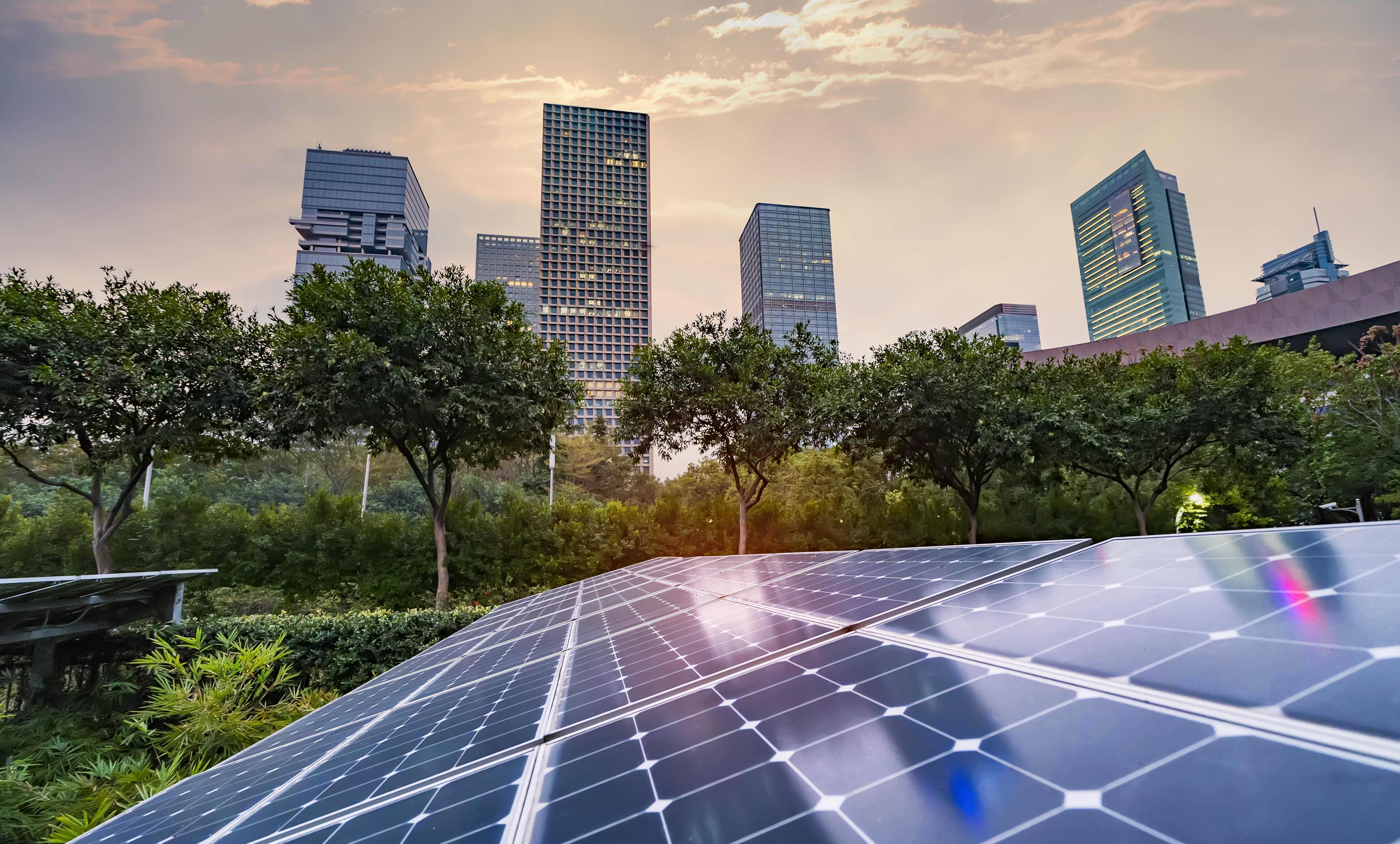In my last post, I talked about the path to decarbonizing buildings to help fight climate change. In this post, I would like to dig a bit deeper into some specific aspects of building infrastructures that can have the most significant positive impact on their sustainability and resilience.
In my second article for Forbes, I mention how many governments around the globe have recognized the massive impact that buildings have on greenhouse gas emissions. Many are now focusing on regulations and incentives around making buildings more sustainable, with some being quite aggressive. For example, FacilitiesNet recently reported that the California Energy Commission recommends making mandatory “a set of building codes to require solar photovoltaic (PV) and on-site battery storage for many commercial, non-residential and multifamily buildings.”

Along with other requirements – including moving away from fossil-fuel-based heating and steps to improve energy efficiency – these new building codes are intended to help the state achieve its eventual goal of going 100% renewable energy to reduce its carbon footprint. Adding on-site solar and energy storage can also help customers ride through unexpected utility outages.
This is an excellent example of the two-pronged approach needed to fight climate change. As part of our Buildings of the Future vision, Schneider Electric believes that all organizations need to achieve maximum sustainability in buildings to help the world limit emissions and global temperature rise. But it would help if you also improve your resilience against increasingly severe weather events. Let us look at some of how today’s smart building technology can help you achieve both.
All-digital, all-electric, all-sustainable buildings
Power digitalization delivers the real-time data and analytics that your facility team needs to identify energy inefficiency and waste. Connecting IoT-enabled devices to software and services unlocks significant opportunities for better understanding how you use energy to find savings and reduce energy-related emissions. But having a digital view of your infrastructure will also help you identify risks and enable predictive maintenance, both of which will help you minimize downtime and get more out of equipment.
Integrating power management with building management and process automation systems opens up greater opportunities.
For example, HVAC system settings can be optimized in response to occupancy sensors, so heating or cooling only the areas in use. You can also pre-heat a space before it is predicted to be used. These applications can help cut energy and emissions and optimize for comfort.
Another way to reduce emissions is through electrification.
Any fossil-fuel-based heating loads, like gas-fired boilers, should be converted to electric. You should also consider commercial-scale electric heat pumps, a mature, highly efficient, and cost-effective technology. By connecting these to your digital power management infrastructure, you will optimize their performance even further.
Further, the continued growth in electric vehicles means more drivers will want to connect to a charger at home, work, or shopping. Your buildings need to respond. Your building infrastructure can absorb that additional load when you only have to put one or two chargers on a site. But when you need to charge 50 electric vehicles in your parking lot simultaneously, you will need to have the power infrastructure to support that larger load, and a smart power management system to help intelligently orchestrate charging.
Using a microgrid for resilience, sustainability, and savings
On-site renewable energy generation – for example, photovoltaic panels or wind generators – are now an increasingly cost-effective option for all kinds of buildings. In combination with energy storage, a microgrid solution helps you connect and coordinate these on-site energy resources in the safest, most efficient, and reliable way possible.
In fact, you should begin thinking of your buildings as distributed energy resources on the smart grid. With a microgrid controlling your energy assets, any excess capacity you have can be sold to the smart grid to be put at the service of others. Doing so may mean that your local utility does not have to build a new power plant because they can use the available energy resources from their customers when needed.
This is where Schneider Electric envisions the unification of power digitalization and Buildings of the Future with the Grids of the Future. The smart grid is becoming more critical than ever. The ‘wires’ that connect you to it will help you monetize your excess capacity by acting as a conduit to someone that needs it or give you the flexibility to buy from others.
With on-site renewables and storage, you can supply many of your loads with ‘green energy, such as EV charging and electric heat pumps. You will also be able to use that on-site energy to improve the independence and resilience of your buildings by using it to help you ride through a grid blackout. And sharing your excess energy with the smart grid will help improve the stability of the grid itself, helping your utility manage periods of high demand. Think of your microgrid as a backup for the grid, while the grid is a backup for your microgrid. Read how our customer used advanced microgrids to help their reduce greenhouse gas emissions by 6,800 metric tons each year.
Smart buildings and the smart grid enable these types of new use cases and revenue models. But to fully leverage these opportunities, you need smarter control of your energy. Energy is delivered at the speed of light, so you need the data, insights, and control to make fast decisions and act on them. That is where digitalization comes in.
Designing for net-zero and resilience
Digitalization is critical to every aspect of achieving greater building sustainability and resilience. Perkins+Will, one of the largest architecture firms globally, has partnered with Schneider Electric on several projects, including the new Dar London headquarters. Steven Charlton, a principal managing director at Perkins+Will, says that digital systems are helping them design buildings for net-zero. “Digital twins are helping us redefine what a building is and how it should perform.” Real-time data for all factors affecting a building help support predictive analysis that, in turn, helps further optimize a building throughout its lifecycle. At Dar headquarters, connected devices feed data for electrical and mechanical systems, visualization software, and digital services that help optimize the building for health, comfort, and sustainability.
Perkins+Wills believes that organizations should be targeting 2030 for net-zero, not 2050. That means starting to plan now. They are helping clients by guiding them to achieve carbon neutrality for new buildings in a low-cost or cost-neutral way. This requires a clear roadmap with a defined strategy and monitoring and optimization supported by real-time data.
Having a well-defined plan is critical to achieving a design for net-zero. It should take into account goals such as how many kilowatt hours per square meter per year you are targeting, how much local renewable generation you need, how you will maximize electric loads, how you will monitor and analyze data to optimize efficiency, and how you will integrate management of different systems.
And note that digitalization can be done cost-effectively for both new and existing buildings. For a building retrofit, you can plan for continuous operation with minimal business disruption.
Fighting climate change is also good business
The technology to enable Buildings of the Future is here today, for new and old buildings. It is not only the right thing to do for the planet; it is simply good business. Many building owners and operators believe that transitioning to ‘green’ buildings requires too high of an investment, but this is not true.
The incremental cost to build or upgrade to a more sustainable building can be relatively small and have a fast payback with continued energy savings – not to mention helping to avoid costly downtime.
Schneider Electric is continuously learning from our experiences with our buildings and operations. We are sharing these proven successes with you to confirm that your goals for improving the sustainability and resilience of your buildings are well within reach.
As I briefly mentioned in my last post, the newest Schneider Electric building in Grenoble, France, is an excellent example of a Building of the Future. Intencity is set to achieve the highest LEED Platinum score globally, consuming only about one-eighth of the average consumption of buildings in Europe. That is an amazing accomplishment. In addition to being hyper-efficient, its extensive on-site renewable energy and energy storage will also help it become net-zero energy. All of this has been achieved with only three to four percent higher construction costs, representing a short six-year payback period.
Discover more about our vision for Buildings of the Future and our EcoStruxure Buildings solutions.



